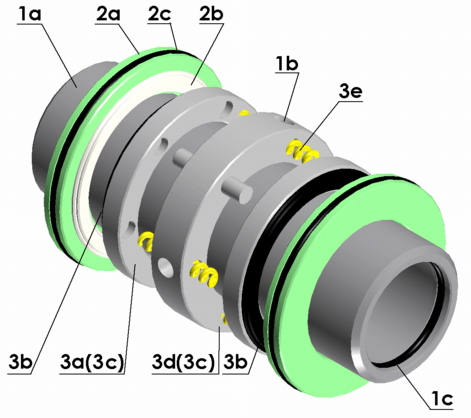Seal Gas Heater System & Applications
Last updated on August 18th, 2021 at 08:31 pm
Compression equipment requires precision temperature controls for seal gas. Seal gas heaters allow equipment to operate under high pressure without risking leaks.
If leakages do occur, they can cause environmental damage, safety hazards, and eat into profits. As such, choosing the right seal gas heater is important to your project and your bottom line.
Seal Gas Heating Applications
In compression systems, seals can be either wet or dry. The traditional approach was using wet mechanical seals, where there is contact between the faces of the primary and mating rings. These seals are less reliant on seal gas heaters. Where speed is important, however, dry gas seals are preferable.
 One of the most common causes of failure for wet mechanical seals is insufficient lubrication. This can occur as a result of human error, a lack of maintenance and cleaning, improper installation, or can just occur over time. Where there is not enough lubrication, the seal is subjected to more friction, which increases temperatures inside of the pump. Dry gas seals and seal gas heaters serve to prevent this friction from building.
One of the most common causes of failure for wet mechanical seals is insufficient lubrication. This can occur as a result of human error, a lack of maintenance and cleaning, improper installation, or can just occur over time. Where there is not enough lubrication, the seal is subjected to more friction, which increases temperatures inside of the pump. Dry gas seals and seal gas heaters serve to prevent this friction from building.
Dry gas seals are non-contacting. The rotary face has spiral grooves, allowing the generation of pressure and creating a lifting force. This force keeps the faces apart, preventing frictional heat. Where speed compressors operate under greater pressure and generate more heat, dry gas seals are necessary. When using this type of seal, a seal gas heater is essential.
Seal gas heaters are not limited to use in speed compressors. These process heaters are found in any gas compression system with dry gas seals.
Common applications of seal gas heaters include:
- Pipeline compressor stations
- Process compressors
- Centrifugal compressors
How They Work
The role of the seal gas heater is to make the sealing gas safe and effective as a seal. Dry gas seals are found in systems with high operating pressures. As such, moisture or insufficient lifting force in the seal gas creates a risk of leakage. The heater technology works to prevent or reduce this risk.
The primary role of the heater is to preheat the sealing gas. This process removes moisture from the gas. As well, it prevents condensation from forming in the seal, thus creating a dry gas seal.
The preheated sealing gases are injected into the seal. Here they provide the lifting force that keeps the faces apart, creating a non-contacting seal that prevents frictional heat. Additionally, the sealing gases form a barrier between the external atmosphere and the process gas, protecting the environment and the system.
Electric Heater Systems
Wattco custom manufactures electric heater systems for all major industries and processes. Our team of engineers works with you and your budget to select the ideal heater type, configuration, and materials for your project.
Electric heaters offer superior performance with precision heating and top-of-the-line efficiency. Their ease-of-maintenance and simplified design offer longer equipment lifespans with little degradation in performance.
Contact Wattco today for electric seal gas heater quotes and information.
